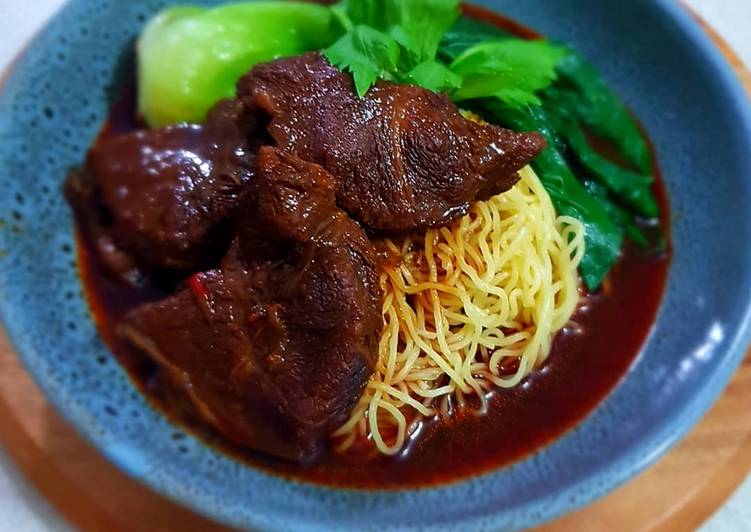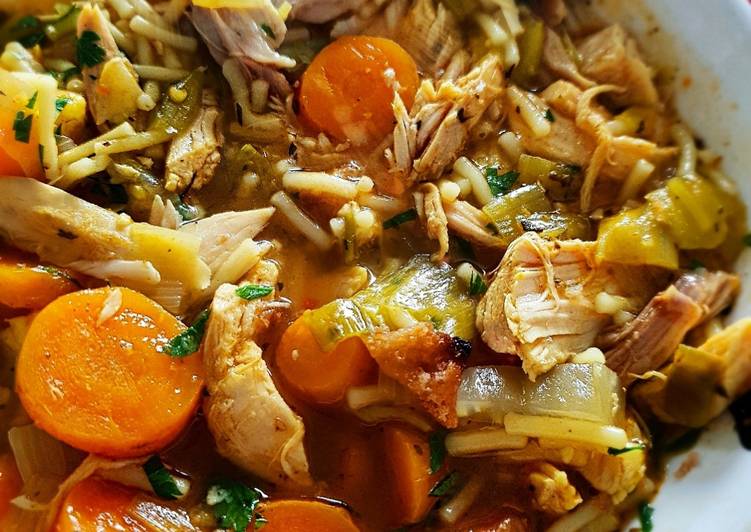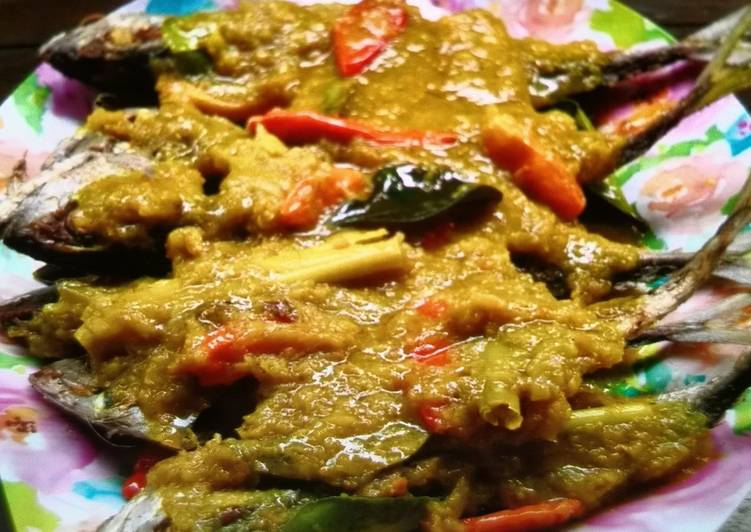
Hey everyone, it’s Drew, welcome to my recipe site. Today, I will show you a way to prepare a distinctive dish, taiwanese beef noodles soup. One of my favorites food recipes. For mine, I will make it a little bit unique. This is gonna smell and look delicious.
Remove the meat from the pot, rinse in cold water, and cut into thick slices. Taiwanese Beef Noodle Soup is a perfect orchestration of tender beef, a rich and slightly spicy broth, fresh noodles, a little bok choy, and that absolutely necessary fistful of Chinese pickled mustard greens and fresh scallions and cilantro. Beef noodle soup is a noodle soup made of stewed or red braised beef, beef broth, vegetables and Chinese noodles.
Taiwanese Beef Noodles Soup is one of the most favored of recent trending meals on earth. It is simple, it’s fast, it tastes yummy. It’s enjoyed by millions every day. Taiwanese Beef Noodles Soup is something which I’ve loved my whole life. They are fine and they look fantastic.
To begin with this recipe, we must first prepare a few components. You can cook taiwanese beef noodles soup using 18 ingredients and 3 steps. Here is how you can achieve it.
The ingredients needed to make Taiwanese Beef Noodles Soup:
- Take 3 tablespoon olive oil
- Make ready 1 onion, sliced
- Get 4 garlic cloves
- Take 4 spring onions
- Get 3 large red chilli, deseeded
- Take 3 tablespoon hot been sauce
- Prepare 3 tomatoes, cut into wedges
- Get 2 tablespoon brown sugar
- Take 1/4 cup dark soy sauce
- Get 1/2 cup soy sauce
- Prepare 1/2 cup cooking chinese cooking wine
- Get 2 star anise
- Make ready 1 kg beef chuck, cut into roughly 4 cm cubes
- Make ready 3 cups beef stock
- Get 2 small bunches of bok choy, halved and quickly blanched in boil
- Take 200 gram cooked egg noodles
- Prepare to taste Salt and sugar
- Take Coriander or spring onions or coriander to serve
For example, Sichuan's spicy beef noodle soup, Lanzhou's beef noodle soup and Taiwan's braised beef noodle soup are. Taiwanese beef noodle soup 红烧牛肉面 is a popular staple in different countries in Asia. This Asian beef noodle soup is very similar to the Szechuan style beef noodles soup. In this article, I will cook the way how it is served in Malaysia, where I live.
Instructions to make Taiwanese Beef Noodles Soup:
- Heat the oil in the pot over medium-high heat. Add the onion, garlic, spring onions and chillies. Stir-fry for 2-3 minutes or until the onions have softened but not coloured. - Add the hot been sauce and stir-fry for another minute.
- Then stir through the tomatoes and the brown sugar. Now add the dark soy sauce, soy sauce, Chinese wine and the star anise. Add the beef and mix to combine. Add the beef stock and 2 cups of water. Mix to combine. And cook about 2 hours or more.
- After couple hours, and the meet are cook and tender, then taste the soup. - Divide the noodles among serving bowls. Top with bok choy and chunks of beef. Ladle over the soup. And sprinkle parsley or spring onions or coriander on the top and serve.
It might be slightly different from the authentic version from Taiwan. Beef noodle soup is considered a national dish in Taiwan, and I had a chance to experience it firsthand at Lao Zhang Beef Noodles, a former winner of Taiwan's annual Beef Noodle Festival. I'm from Taiwan originally and my husband lived there for many years, we both agree this recipe is very authentic, its probably better than a lot of of Taiwanese restaurants' beef noodle soup. A bowl of hot noodle soup topped with tender braised beef is an absolutely satisfying comfort dish. This recipe shows you how to create a bowl of beef noodle soup that is truly rich in flavor with the fewest steps.
So that’s going to wrap this up for this special food taiwanese beef noodles soup recipe. Thanks so much for your time. I am confident you can make this at home. There is gonna be interesting food at home recipes coming up. Don’t forget to save this page in your browser, and share it to your loved ones, colleague and friends. Thank you for reading. Go on get cooking!


